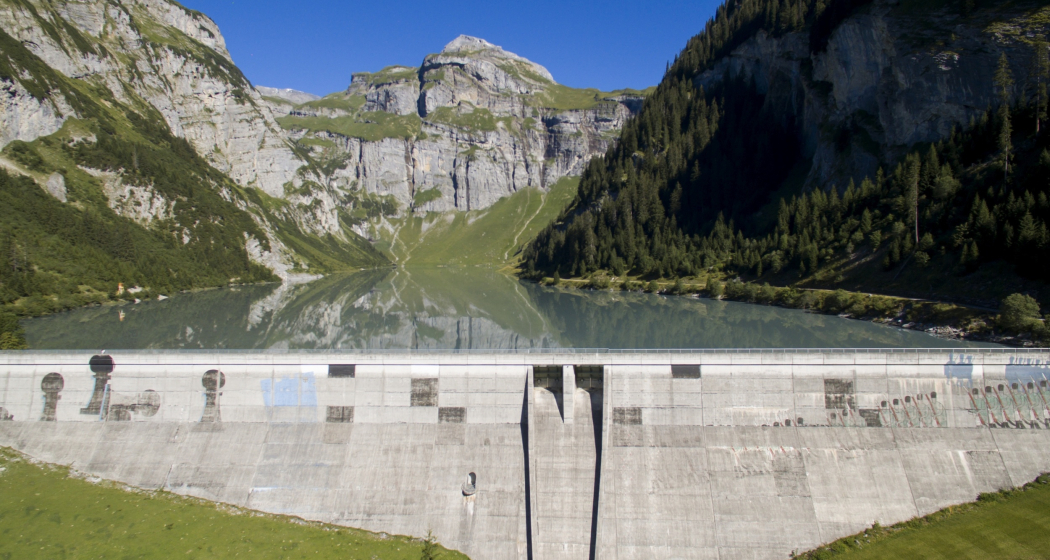Attraction Surselva
Staumauer, Pigniu


Show all 4 images

In the small mountain community of Pigniu/Panix in the Grisons Vorderrheintal, a dam wall was built in 1989 at the back of the large basin. Since September 1999, the sober wall has shown the hiker from a completely different side.
Description
In the small mountain community of Pigniu/Panix in the Grisons Vorderrheintal, a dam wall was built in 1989 at the back of the large basin. Since September 1999, the sober wall has shown the hiker from a completely different side. Already at the first hairpin bends to Pigniu towards the reservoir you will see white and black squares. Then suddenly a huge bright blue tower flashes out between the fir trees, behind them pawns from a chess game, lying and standing. As you continue hiking, the image disappears. But then heads appear, a whole army, with huge caps on their heads, surmounted by just as many pointed bayonets. And then you see: From right to left, Russian soldiers, who are 12 meters tall, march in a long column over the dam wall towards the tower.
This is exactly the goal that the Engadine-born artist Martin Valär wanted to achieve with his monumental work. For a long time he dreamed of turning a dam wall into a painting - despite the special difficulties that arise solely from the dimensions and the design. The Panix Wall was almost ideal in this respect. Built as a weight wall with a height of 50 m and a crown length of 240 m, it offered a huge concrete canvas.
The planned start of work in March 1999 had to be postponed to May due to the heavy snow and closed access. In about 25 working days, Martin Valär realized his 80 m wide and 40 m high picture with the simplest means. More than 300 times he abseiled over the wall with paint bucket and roll. By means of huge templates, the soldiers were sketched on the wall and with the help of a sophisticated system the fallen "peasants" were placed. On July 3, 1999, the Russian soldiers received their white trousers. For this alone, Valär had to abseil over the wall 27 times. For 20 to 30 years, the exterior dispersion paint should withstand the weather conditions.
Martin Valär used the idea for the monumental painting to play chess, the game of war that was popular in Russia: In 1799, the Russian general Alexander Vasilyevich Suvorov marched with his army from Elm to Pigniu over the Panixer Pass in retreat from the French. The weakened army was so affected by the arduous route and the early snow that it arrived in Pigniu decimated, where it plundered the whole village.
On the dam wall, Suvorov is depicted as a tottering blue tower - this general who had been pushed back and forth with his army by the rulers of the time as if on a war chess field. His fallen soldiers receive a monument through the chess pawn pieces: In an almost endless row, the surviving Russian soldiers move over the wall.
For Martin Valär, one thing is important: "With art you should go to the people, not the other way around. An image without a viewer is meaningless. My art should stimulate the individual to think. It is a process that begins in the artist and triggers something in the viewer via the medium of image. Art can and should also be ephemeral."
(Text entered by: Regiun Surselva)
Contact
Staumauer, Pigniu
7159 Andiast
Responsible for this content: Surselva Tourism.
This content has been translated automatically.

This website uses technology and content from the Outdooractive platform.